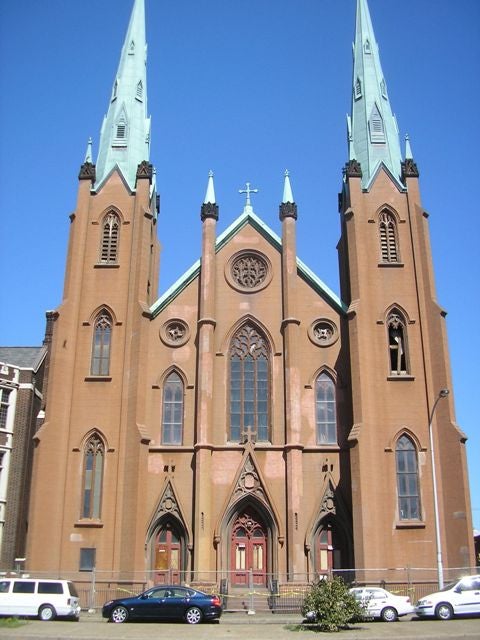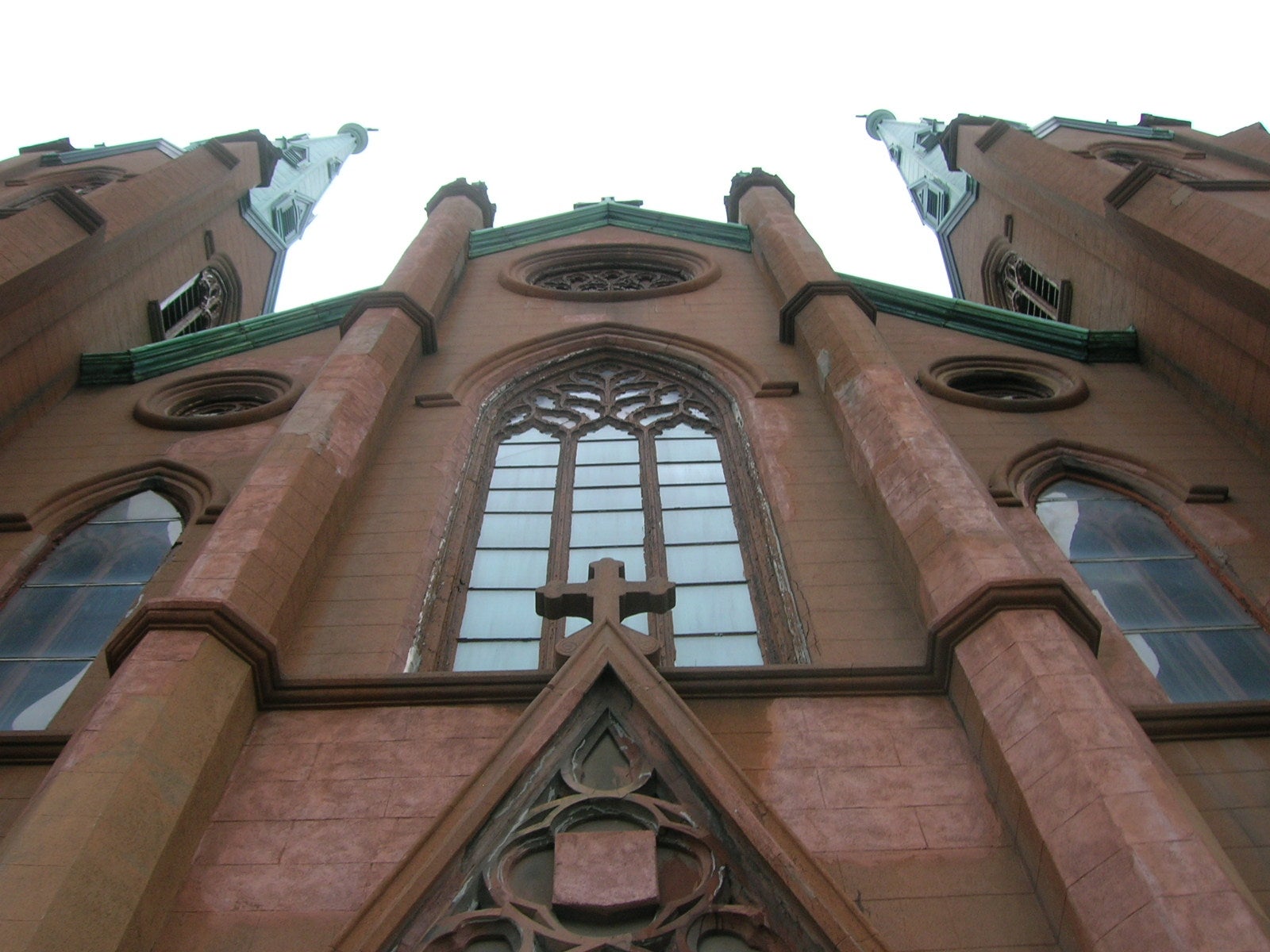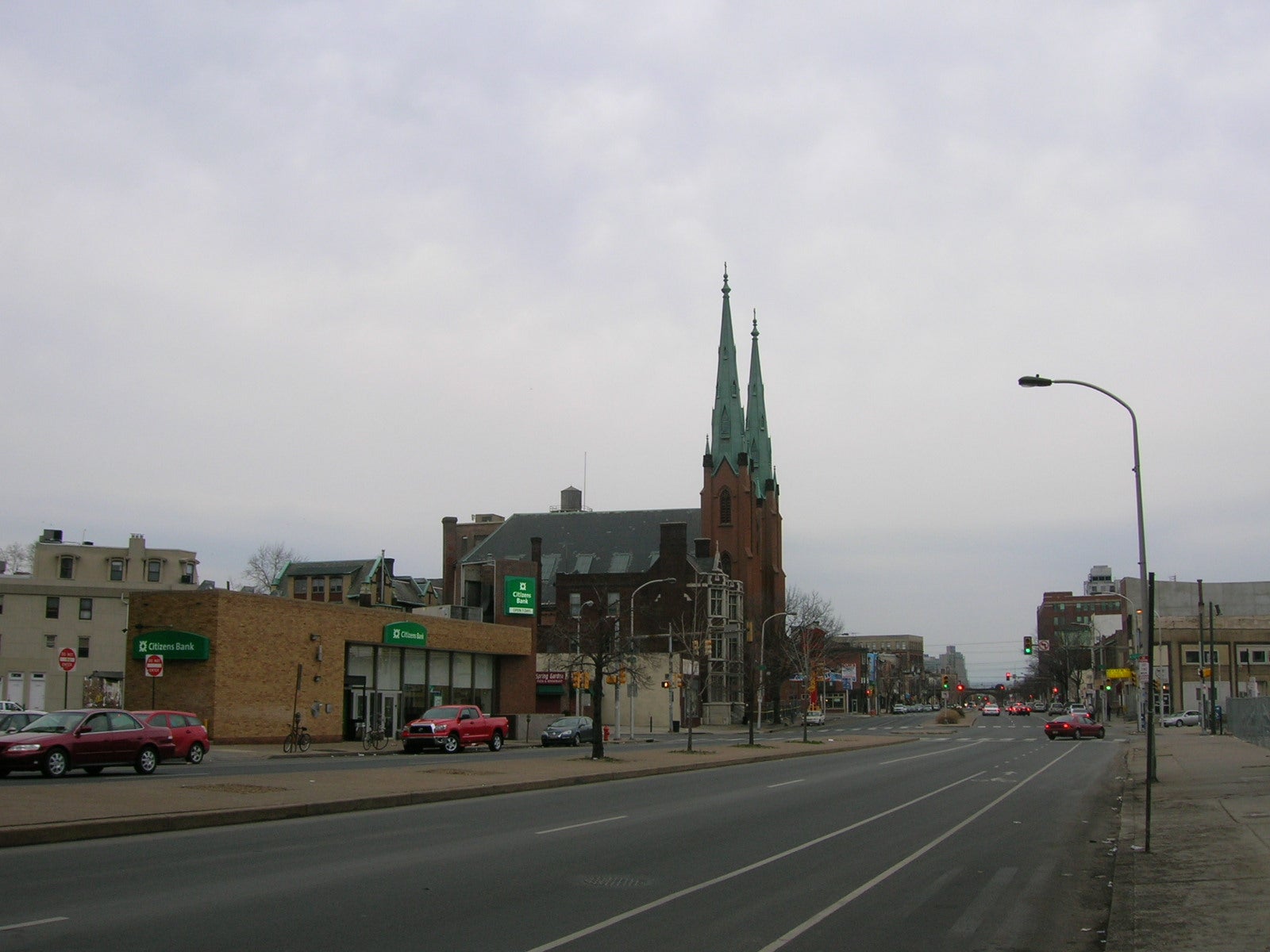Preservation Row: Church of the Assumption

An AIDS organization wants to replace the church with parking. Preservationists say the building is too important historically, architecturally to lose.
The Church of the Assumption. Photo by Andrew Palewski.
April 9, 2009
By Alan Jaffe
For PlanPhilly
A mid-19th Century church that has been vacant for over a decade but boasts a strong architectural pedigree and rich religious history has been nominated for inclusion on the Philadelphia Register of Historic Places. The designation committee of the Philadelphia Historical Commission will hear the case for the Church of the Assumption, 11th and Spring Garden Streets, on April 16.
The champion for the church’s preservation is Andrew Palewski, a resident of the West Poplar and Callowhill community who sees the building as a neighborhood icon and hopes to save it from demolition.
The owner of the structure is a non-profit social services organization, Siloam, which purchased the property from the Archdiocese several years ago. Siloam describes itself as a wellness center for people living with HIV/AIDS. It offers “counseling, wellness education, therapeutic body work, and respite retreats to those infected with or affected by” the disease, according to a 2006 application Siloam made to the Community Design Collaborative for a recommendation for reusing the church and two adjacent buildings, a convent and rectory.
The organization currently utilizes the adjacent buildings and is considering the demolition of the church in order to rebuild or create more parking space, said John Gallery, executive director of the Preservation Alliance of Greater Philadelphia, which is supporting the nomination for preservation.
Leaders of Siloam did not return calls for comment.
According to Palewski, the Church of the Assumption has “architectural and cultural significance both locally and nationally. It was designed and built by the most prolific ecclesiastical architect of 19th century America. Over 600 churches were built by Patrick Charles Keely (1816-1896) in North America, and Assumption Church is the oldest surviving Keely structure in existence.” The church was erected in 1848-49 and had extensive renovations in 1899.

Detail of the church entrance. Photo by Palewski.
The architect’s work inspired the formation of the Keely Society, which is dedicated to the documentation of his life, art and work. Society founder Edward Furey, of Enfield, Conn., confirmed the significance of the Spring Garden Street church and said it is “most likely the last surviving example of the first year of his church designs.”
It was also a church with great significance to the Catholic Church, Furey said. John Neumann helped consecrate the Church of the Assumption, and Katharine Drexel was baptized there. Both became Catholic saints.
“St. Katharine Drexel, whose benevolence to African-Americans and Native Americans was unprecedented, has a legacy that speaks for itself,” Palewski said. “Her lifelong mission was guided and inspired by the Catholic faith, which for her began at Assumption.”
Though it has been vacant for about 12 years and its interior artifacts were removed when the Archdiocese sold it, the church continues to have a vital role in the community, Palewski said. “Assumption is an extraordinary survivor in a landscape that has been all but stripped of its architectural heritage. It is one of the most prominent structures in the area. Its copper spires, which stand over 15 stories high, are easily recognizable from the far reaches of West Poplar and Callowhill. It’s an outstanding building that represents the pinnacle of historic architecture in these two neighborhoods,” he said.

The spires of the church rise above its neighborhood. Photo by Palewski.
“The era of decline is over” in this area, Palewski continued. “There is an urban renaissance taking place, and the demolition of an historic neighborhood icon is not consistent with the aspirations of this community. The few historic landmarks that remain are cherished cultural assets.
“When the West Poplar neighborhood critiqued the redevelopment plans for the Divine Lorraine Hotel, this sentiment couldn’t have been more apparent. There were many differing opinions about the design of the construction adjacent to the hotel. But there was no debate over the hotel itself. The neighborhood was cohesive in its desire to preserve the historic building. This speaks to the community’s reverence for the few remaining symbols of its past,” Palewski said.
In its 2006 application to the Community Design Collaborative, Siloam leaders explained that the organization planned to “expand our services into our recently purchased buildings within 18 months to three years and to partner with another AIDS service organization with the goal of mutually enhancing our programs. This expansion is of vital importance to our work in the HIV/AIDS community.”
The Design Collaborative’s assessment found that “the church building provides the greatest opportunity for large meeting and activity space. The need for a large meeting space by other HIV/AIDS organizations was raised by Siloam representatives at the team’s initial meeting. Rental of the church building to other HIV/AIDS organizations could potentially provide a revenue source for Siloam.”
The assessment concluded: “The Siloam complex is a major presence in an area of the city that is experiencing both residential and commercial growth. It is recommended that preservation and adaptive use of the church building be a part of Siloam’s ongoing contribution and service to the community.”
Palewski said he hopes to meet with Siloam representatives “once the building is registered” on the preservation list. “Siloam is a member of our community, and I believe that the best outcome for the building will be one that satisfies the desires of both Siloam and the adjoining neighborhoods. Ideally, I would like to see Siloam and the neighbors work together to create a solution for the sustainable preservation of the building that is viable for their organization.”
Contact the writer at alanjaffe@mac.com.
Click below to see more photos of the church, including some historic shots of the interior. All photos are by Palewski unless otherwise noted.
Previous stories:
Girard Warehouses
WHYY is your source for fact-based, in-depth journalism and information. As a nonprofit organization, we rely on financial support from readers like you. Please give today.



